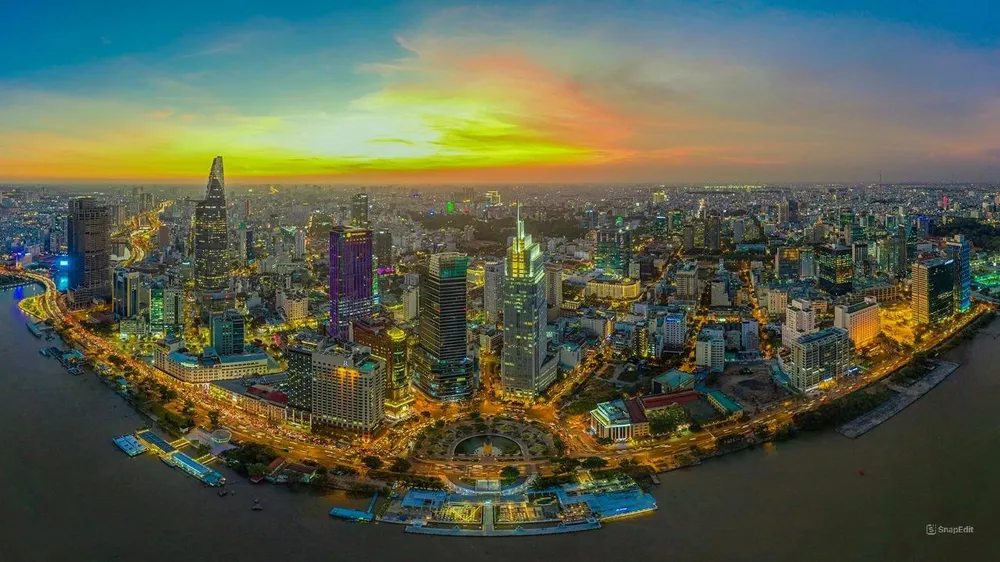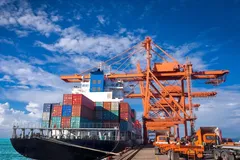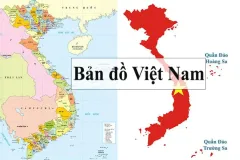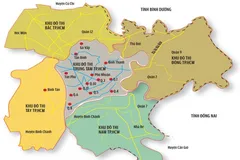
More than a mere redrawing of administrative boundaries, this bold consolidation marks a pivotal step in modernising governance and elevating Vietnam’s national profile—ushering the country into a new league, one that aspires to stand shoulder to shoulder with major global economies.
Provincial Reorganisation: The Making of Powerhouses
The most notable outcome of the administrative overhaul is the emergence of powerful mega-regions. Chief among them is the newly restructured Ho Chi Minh City, now comprising the former city itself along with Binh Duong and Ba Ria–Vung Tau provinces. The merger aims to transform the southern economic hub into a city of Asian stature—on par with regional peers such as Singapore, Shanghai, and Bangkok.
Elsewhere, the consolidation of Lam Dong with Binh Thuan and Dak Nong has created the nation’s largest province by area, spanning an expansive 24,000 km². Conversely, Hung Yen, after its merger with Thai Binh, now holds the title of Vietnam’s smallest province in land size but is the most densely populated.
Phu Tho has become the province with the most bordering localities—seven in total—cementing its strategic importance in interregional connectivity. Meanwhile, the combination of Khanh Hoa and Ninh Thuan has resulted in the longest continuous coastline among all provinces, underscoring its future potential in marine economy and tourism.
Despite the consolidation, six centrally governed cities remain: Hanoi, Hai Phong, Hue, Da Nang, Ho Chi Minh City, and Can Tho. Among them, the newly expanded Da Nang, which now includes Quang Nam, becomes the largest by land area, exceeding 11,859 km². Ho Chi Minh City follows with over 6,772 km², derived from the sum of Ba Ria–Vung Tau (1,982 km²), Binh Duong (2,694 km²), and the former city area (2,095 km²). With a combined population surpassing 14 million, the new Ho Chi Minh City is now the most populous urban centre in Vietnam.
In contrast, Hai Phong—now including Hai Duong—remains the city with the smallest area at 3,194 km². Hue, despite its cultural prominence, has the lowest population among the six major cities, with just over 1.4 million inhabitants.
Prior to the restructuring, Hanoi led the nation in budget revenue, collecting over VND 511 trillion in 2024, alongside a GRDP of more than VND 1.4 quadrillion. Ho Chi Minh City, by comparison, generated slightly less in revenue—about VND 501 trillion—but ranked first in GRDP, exceeding VND 1.7 quadrillion.
Following the merger, the economic scales have shifted. With combined fiscal contributions from Ba Ria–Vung Tau and Binh Duong, Ho Chi Minh City's 2024 budget revenue would surpass VND 681 trillion, while its GRDP would rise to an estimated VND 2.7 quadrillion—solidifying its position as Vietnam’s top economic engine.
To break down the inputs: Ba Ria–Vung Tau contributed over VND 98 trillion in revenue in 2024, while Binh Duong added VND 76 trillion. In contrast, Hanoi remains at VND 511 trillion, falling to second place. Hai Phong, bolstered by Hai Duong, now ranks third with more than VND 148 trillion in revenue.
Per capita income figures also reveal interesting shifts. Prior to consolidation, Binh Duong had the highest average income in Vietnam at VND 107.6 million per year, followed by Hanoi (VND 89 million), Dong Nai (VND 84.5 million), Hai Phong (VND 84.4 million), and Ho Chi Minh City (VND 81.5 million).
However, once merged, the rankings reshuffle. Hanoi retains its top position at VND 89 million per capita, but Ho Chi Minh City jumps to second place with a revised average income of VND 86.5 million, reflecting the integration of its affluent new constituents. Hai Phong now sits third, with a recalculated average of approximately VND 78.6 million.
The Rise of Super Cities and Super Provinces
Ho Chi Minh City has long been regarded as Vietnam’s foremost metropolis, with an economy larger than that of several Southeast Asian nations combined. Following the merger, it now stands as a “super city”, boasting an economic scale equivalent to VND 2.7 quadrillion—approximately USD 108 billion. This accounts for a staggering 25% of the national GDP.
To put this into perspective, Ho Chi Minh City’s output dwarfs the GDP of Laos (USD 15 billion), Cambodia (USD 51 billion), Brunei (USD 10.1 billion), Myanmar (USD 65 billion), and East Timor (USD 2 billion). Collectively, these countries fall short of USD 80 billion—far below the economic weight of Vietnam’s southern giant.
This stark contrast not only highlights the city’s pivotal role in Vietnam’s national development, but also reinforces the country’s growing competitiveness within the ASEAN region.
Dong Nai province is likewise transforming into a superlative economic and infrastructural powerhouse. Now merged with Binh Phuoc, it commands several distinctions that set it apart.
The province is home to Long Thanh International Airport, spanning 5,000 hectares—set to be Southeast Asia’s largest aviation hub upon completion. It has become the largest province in the southeastern region, covering 12,737 km²—over 2.5 times the national size benchmark and larger than the entire country of Singapore. Its population exceeds 4.3 million, more than three times the standard threshold.
Economically, Dong Nai ranks among the top contributors nationwide, with a GRDP of nearly VND 549 trillion. It also leads in industrial infrastructure, hosting 52 industrial parks—the most in Vietnam.
Administratively, the province houses Tri An commune, which alone spans 660 km²—larger than some entire towns. Moreover, Dong Nai has undergone Vietnam’s most extensive administrative streamlining, reducing its 263 former communes, wards, and towns to just 95 units—highlighting a strong push toward governance efficiency.
Vietnam’s provincial reorganisation reflects more than a quest for bureaucratic efficiency. It signals a strategic vision aimed at enhancing national competitiveness, improving resource allocation, and fostering regional synergies.
By aligning urban development with economic clusters, the country is poised to extract greater value from its demographic and geographical advantages. Super cities like Ho Chi Minh City and super provinces like Dong Nai are becoming new engines of national growth, innovation, and integration with global value chains.
The consolidation also sends a signal to investors: Vietnam is no longer content with incremental reform. The boldness of this restructuring underlines a growing confidence in managing scale, complexity, and international competitiveness.
In its new configuration, Vietnam is not merely reshaping its map. It is redrawing its future.




















